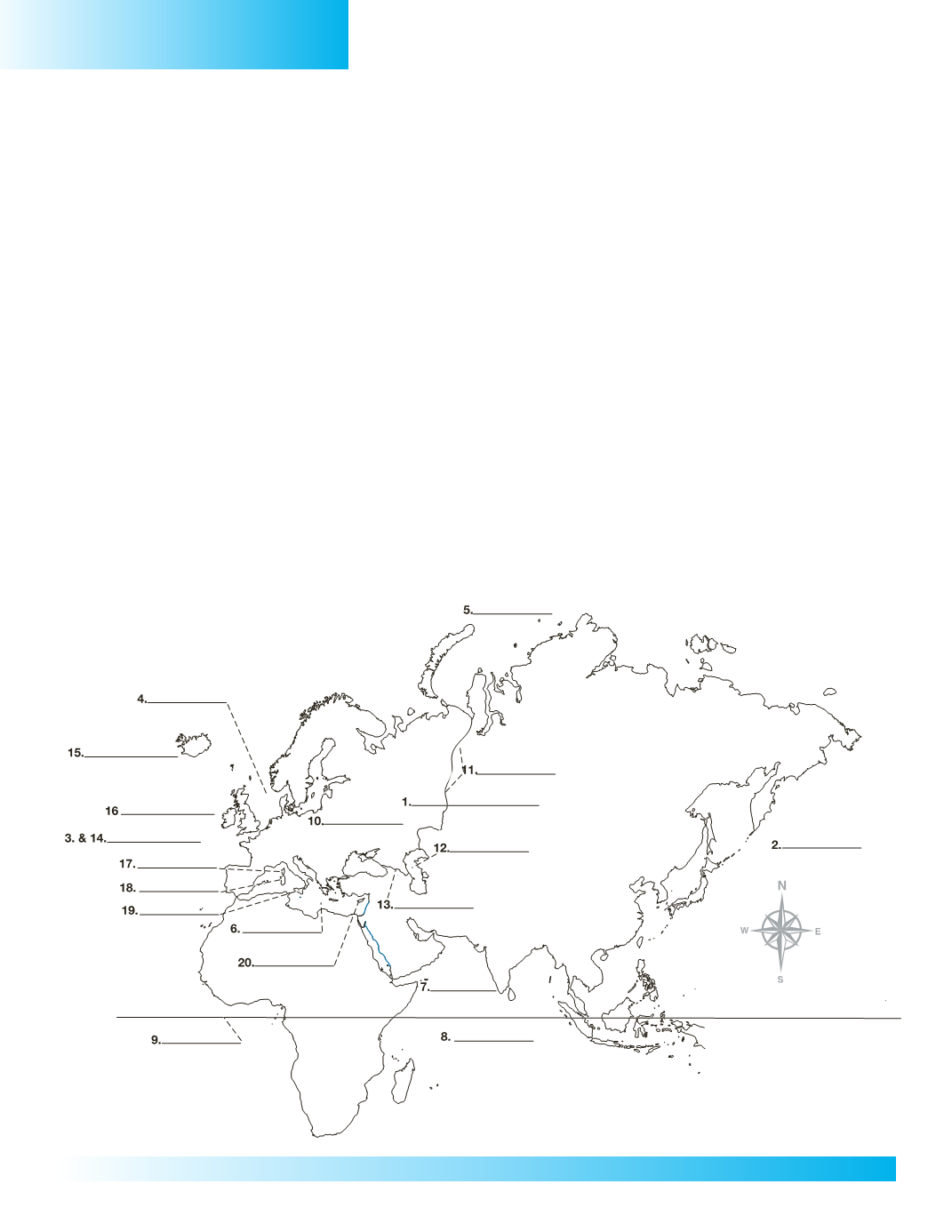
PENNSVALLEY
20
COPYRIGHT
Europe
Lesson 11:
Introducing the Continent of Europe
We will begin our study of the Eastern Hemisphere with the continent of Europe. Of the seven
continents thatmakeup theearth’s land surface, Europe is the second smallest. It covers 7percent of
the earth’s land surface.Only the continent of Australia is smaller.
AlthoughEurope is small in physical size, it is crowdedwith countries and people.Presently, there
are 43 independent nations found within the borders of Europe.These countries are home to people
with diverse backgrounds, languages and ways of life. Europe has more than 729million people, 60
different languages, and is the world’s third most populated continent. Countries with some of the
highest
populationdensities
in theworldare found inEurope.Populationdensity is calculatedas the
number of people per squaremile.Monaco, one of Europe’s smallest countries, is themost crowded
withmore than 42,000 people per squaremile.
Because the continents of EuropeandAsiamakeup the same large landmass, geographers often
refer to thisareaas
1.Eurasia
.Eurasiastretches from the
2.PacificOcean
in theeast to the
3.Atlantic
Ocean
in the west. Eurasia is framed by the
4. North Sea
and
5. ArcticOcean
in the north and the
6.MediterraneanSea
,
7.ArabianSea
,
8. IndianOcean
, and
9.Equator
in thesouth.
10.Europe
covers
less than 20 percent of the land area of all of Eurasia. Many geographers consider Europe a giant
peninsula that extends from the
11. Ural Mountains
,
12. Caspian Sea
, and
13. CaucasusMountains
westward to the
14. Atlantic Ocean
. Thousands of islands surround mainland Europe but are
considered part of the continent.
15. Iceland
, the
16. British Isles
,
17. Corsica
,
18. Sardinia
,
19. Sicily
and
20. Crete
are some of Europe’s larger islands.


